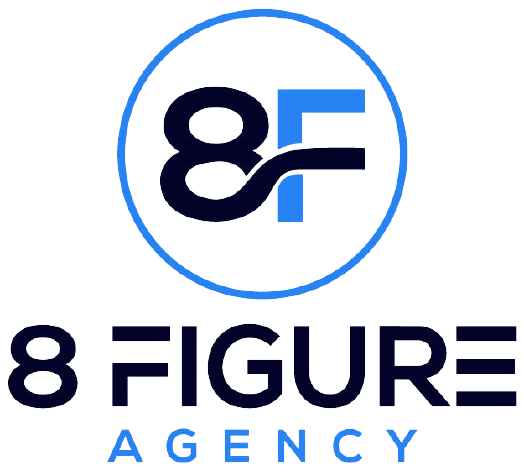Org Chart: Everything You Need To Know
An Org chart is one of the most crucial tools for your business, especially if properly deployed. Regardless, many people continue to misunderstand this tool, its efficiency and its critical role in the setup of a company.
Here, I will demystify the org chart explaining the reasons why the tool is critical to building a stable foundation for your business.
But first, let’s take a critical look at what the org chart is, what it looks like, and even common mistakes business owners make with them.
How Does an Actual Org Chart Work?
When thinking of an org chart, who reports to whom is typically what comes to mind. This is a transparent view of how employees’ roles fit into the overall organization structure.
When you think of a good foundation, you think about something solid that allows for a structure or building to be put on it. Now that’s the exact reason why an org chart is critical to the foundation of your company because you need a solid foundation to scale any agency.
Org chart is a solid option that helps build such a strong foundation through a couple of ways, emphasizing who reports to whom but not limited to that.
3 Uses Of An Org Chart
There are numerous reasons to use this tool in your business besides determining who reports to whom. Some instances include:
1. Administrative Operations
Org charts are super important to the managers and executives as it provides the complete organizational picture on a page. Org charts empower the administrators of a company to complete administrative tasks and swiftly identify organizational needs. Some processes that could see an improvement from this include
- Viewing open positions within the organization
- Handling the applications for those positions
- Finishing performance appraisals
- Filing disciplinary actions, and many more.
What’s most interesting about handling these tasks directly from the org chart is that it speeds up processes that typically require long coordination and back-and-forth communications.
2. Manpower Needs
At a glance, Org charts provide executives and managers with every information concerning staff needs within the company. Org charts make identifying the under-staffed departments and the over-staffed ones pretty easy. This tool enables administrators to balance out teams while ensuring that managers get adequate staffing to deliver on the company goals and objectives.
3. Command Chain
In organizations with many employees, you could quickly lose track of the command chain. Understanding the command chain within a company is critical, especially when tracing whom to report to when setbacks occur. Org charts help all staff identify their team leaders within the organization, thereby slashing the amount of time needed to find out who gets what information at every instance.
Maintaining your org chart within your HR software automatically routes workflows, such as leave requests and position requisitions to the appropriate managers and executives for approval. An org Chart will help optimize your organization’s efficiency and communication.
Additional capacities of org charts include:
- Displaying what each person owns and does even though that’s not always shown.
- Showing what KPIs are for that particular person and their duties.
- They aid in visualizing expectations.
4 Common Errors with Org Charts
1. Outdated Tools
The business terrain has evolved immensely over the years. For efficiency reasons, there’s a need to phase out tools that fail to match the demands of the present-day workplace. Before now, companies made their org charts with pen and paper or with software originally for another purpose, e.g. Word Processors.
While these methods did the job, they came with several bottlenecks. Designers had to toil to place individual boxes properly and connect each to its appropriate branch. These charts often need constant review when old employees get promotions and new hires come into the company. The effect of this is that the designer must spend more time preparing a new org chart.
2. Ambiguous Organizational Chart Position
It is easy to assume that whoever sits at the very top of the org chart dictates everything within the organization. This assumption might seem reasonable, but it’s not always true. Several leaders like supervisors, directors and project managers occupy critical roles within the organization. Still, they don’t sit at the apex of the org chart.
Modern org charts swiftly highlight the leaders and their duties. This approach reduces the chances that people will misinterpret positions and responsibilities with such features.
3. Rigidity
Change is indeed constant. When you refuse to evolve, you automatically put yourself on the back foot. Your new business strategy must meet a novel business structure already in place to be effective. It is of utmost importance to strive to develop a new chart with a fresh eye while ensuring it doesn’t follow the old one to a considerable extent.
There are several org charts to choose from depending on the size and needs of your business. They include:
- A flat structure is best for small businesses and has a horizontal layout with no managers between executives and staff.
- A hierarchical design typically looks like a pyramid. It is best when the aim is to display a traditional business structure. Here, one person sits at the top to oversee everything, followed by the managers and their employees.
- A matrix structure shows relationships across the entire business. This structure doesn’t just lay this out vertically. It is the reason why I highly recommend this option for businesses that require dividing teams along product and project lines.
Whatever the case, identify the fundamental differences and what your business needs are at a particular time to pick the appropriate option.
4. Delegation
When making a company organizational chart, you shouldn’t just focus on design and flow. For the chart to work the way you expect it to, you need to match people with the right jobs.
Each person has a different style. When your employees handle jobs that meet their natural style, you can expect them to perform at their highest level. You can rest assured that the ripple effects would improve productivity and output.
Although making organizational charts is a common task in business, both employees and business owners can make mistakes along the way. Consider exploring reliable tools to make your next chart error-free.

















































